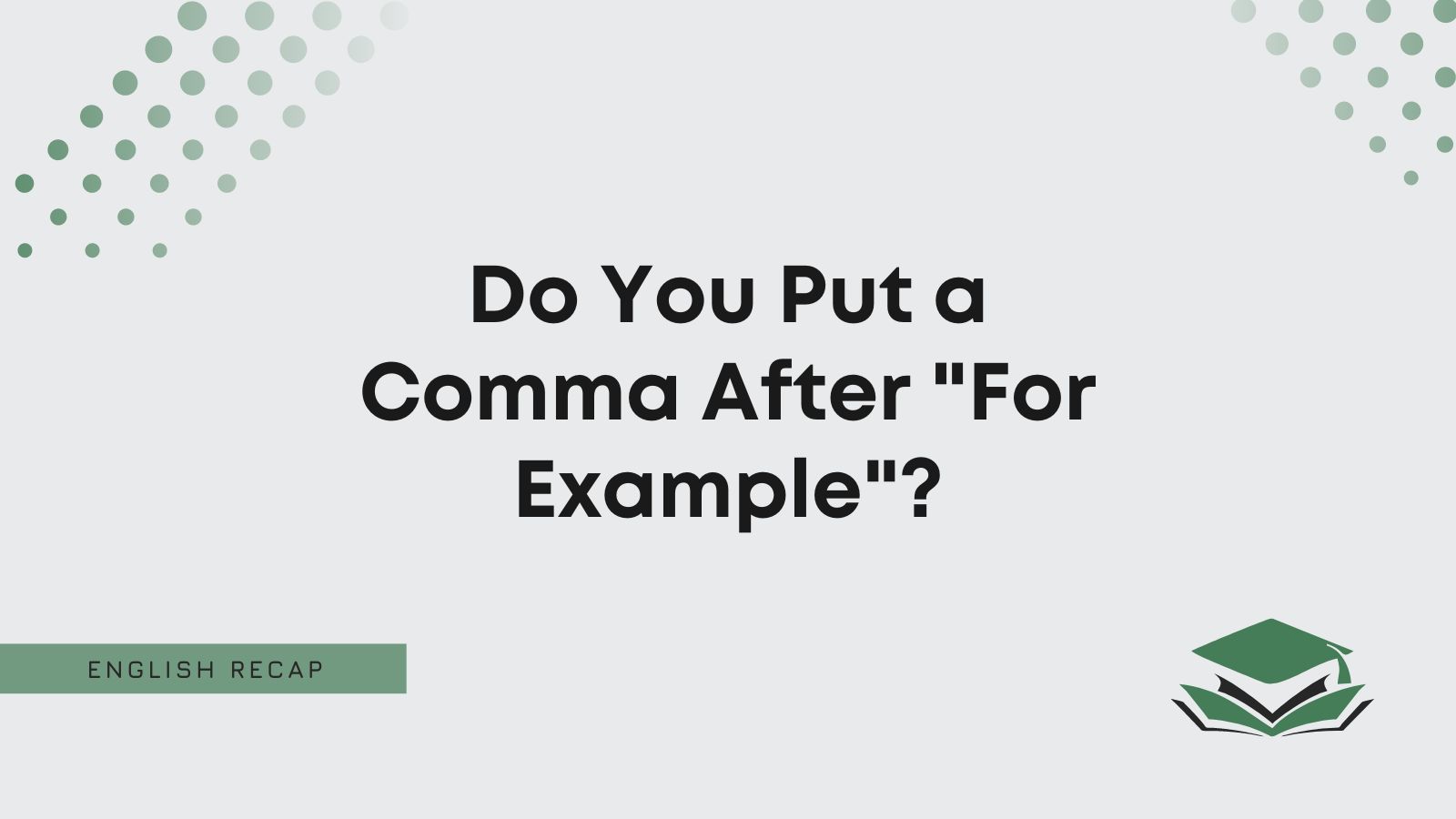Rule 1: You should always put a comma after “for example” when it comes in the middle of a sentence, and the clause after it is dependent.
- Correct: He cannot eat many types of food, for example, seafood, nuts, and gluten.
- Incorrect: He cannot eat many types of food, for example, seafood, nuts, and gluten.
Rule 2: Use a comma after “for example” and a semicolon before when an independent clause follows it.
- Correct: Asian cuisines are very popular; for example, Thai food has grown in popularity in recent years.
- Incorrect: Asian cuisines are very popular, for example, Thai food has grown in popularity in recent years.
Please keep reading to learn more about when you should use punctuation with the term” for example.”
When to Use a Comma After “For Example”
When choosing whether to put a comma after “for example,” you should refer to Rules 1 and 2.
Rule 1: Use a comma after “for example” when it comes in the middle of a sentence, and a subordinate clause or list follows it.
- He visited several countries during his Asian trip, for example, Korea, Japan, and Vietnam.
- You could give her, for example, chocolates or jewelry for her birthday.
Rule 2: You need to put a comma after “for example” when an independent clause comes after the term.
You will know it is independent because it will have a verb and subject and expresses a complete idea.
- Some conflicts are global in nature; for example, the Second World War was fought on several continents.
- The skills taught in schools are changing rapidly; for example, many young people now learn programming and robotics.
When to Avoid a Comma With “For Example”
You always need a comma after “for example.” If what follows the term is dependent, you need a comma before it too.
However, if the clause after it is independent, you need a comma after and a semicolon before.
When to Use a Comma Before “For Example”
When deciding when to put a comma before “for example,” you should refer to Rules 3 and 1.
Rule 3: Use a comma before “for example” when it comes at the end of a sentence.
In these examples, the information that “for example” refers to is dependent and needs a comma before the information and before “for example.”
- It is a good idea to invest in commodities, oil, and gas, for example.
- He loves most fruits, berries, and mangos, for example.
Rule 1: Use a comma before “for example” when it introduces a dependent clause.
For these types of sentences, you will also need to add a comma after “for example.”
- She has lived everywhere, for example, Brazil, Canada, and now France.
- She loves classic novels, for example, 1984 by George Orwell.
Furthermore, you can replace the first comma with other types of punctuation, such as parenthesis.
In this sentence, the parenthesis takes the place and functions like the first comma in the above examples:
- He loves old films (for example, The Godfather from 1972).
Conclusion
You should put a comma both before and after “for example” when it comes before a list or a dependent element in a sentence. When an independent clause follows “for example,” you should put a semicolon before it and a comma after it.

